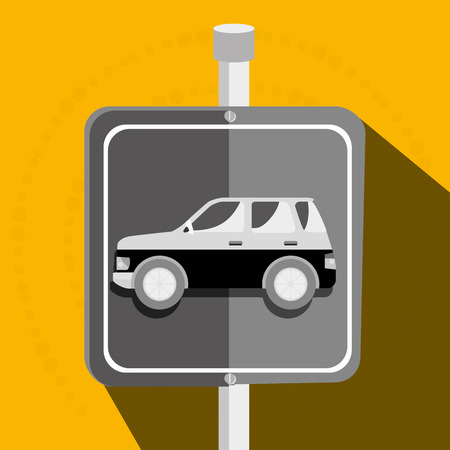1. Understanding Your Car Battery
Your car battery is a crucial component that provides the electrical power needed to start your vehicle and run essential systems. Knowing the different types of car batteries, their expected lifespan, and the warning signs of a failing battery can help you maintain your vehicle properly.
Types of Car Batteries
There are several types of car batteries available, each designed for different vehicle needs. Here are the most common types:
| Battery Type | Description | Common Uses |
|---|---|---|
| Lead-Acid (Wet Cell) | Traditional battery with liquid electrolyte | Most standard gasoline-powered vehicles |
| Absorbed Glass Mat (AGM) | Uses fiberglass mats to hold the electrolyte | High-performance and start-stop vehicles |
| Gel Cell | Uses silica to turn the electrolyte into a gel | Off-road and deep-cycle applications |
| Lithium-Ion | Lightweight battery with long lifespan | Electric and hybrid vehicles |
Expected Lifespan of a Car Battery
Car batteries don’t last forever, and their lifespan depends on several factors such as climate, driving habits, and maintenance. On average, here’s how long each type of battery lasts:
- Lead-Acid Batteries: 3 to 5 years
- AGM Batteries: 4 to 6 years
- Gel Cell Batteries: 4 to 7 years
- Lithium-Ion Batteries: 8 to 10 years
Signs of a Low or Dead Battery
Recognizing the warning signs of a failing battery can prevent you from being stranded. Here are some common indicators:
- Slow Engine Crank: If the engine takes longer than usual to start, your battery may be weakening.
- Dim Headlights: Weak or flickering headlights can be a sign of low battery power.
- Clicking Sound: If you hear rapid clicking when turning the key, your battery may not have enough charge.
- Electrical Issues: Malfunctions in power windows, radio, or dashboard lights can indicate a weak battery.
- Battery Warning Light: Modern vehicles often have a dashboard light that alerts you to a battery problem.
When to Replace Your Battery
If your car exhibits any of these signs, its best to test the battery using a multimeter or have it checked by a professional. A battery with a voltage reading below 12.4V when the car is off may need to be recharged or replaced.
2. Choosing the Right Charger
Picking the right battery charger for your car is essential to keeping your battery in good condition and ensuring a reliable charge. There are several types of chargers available, and each serves a different purpose. Here’s a breakdown of the most common battery chargers and how to choose the right one for your needs.
Types of Car Battery Chargers
Car battery chargers come in different forms, and it’s important to understand their functions before making a choice. Below is a comparison of the most common types:
| Charger Type | Description | Best For |
|---|---|---|
| Trickle Charger | Provides a slow and steady charge, preventing overcharging. | Long-term battery maintenance, seasonal vehicles. |
| Smart Charger | Automatically adjusts charging rate and stops when fully charged. | Everyday use, preventing overcharging, modern vehicles. |
| Jump Starter | A portable device used for jump-starting a dead battery. | Emergency use, roadside assistance. |
| Solar Charger | Uses solar energy to maintain charge levels. | Eco-friendly trickle charging, outdoor or off-grid vehicles. |
Choosing the Right Charger for Your Car
Now that you understand the different types of chargers, here are a few key factors to consider when selecting the right one for your car:
Battery Type
Different cars use different battery types, such as lead-acid, AGM, or lithium-ion. Make sure the charger you choose is compatible with your battery type.
Charging Speed
If you need a quick charge, go for a fast charger. However, if you want to maintain your batterys health over time, a trickle or smart charger is a better option.
Automatic Shutoff
A smart charger with automatic shutoff prevents overcharging, which can damage your battery.
Portability and Convenience
If youre often on the road, a jump starter or portable battery charger might be a good investment for emergencies.
By selecting the right charger for your car, you can extend battery life and avoid unexpected breakdowns. In the next section, well cover the proper steps to connect and use your charger safely.

3. Step-by-Step Guide to Charging Your Battery
Follow a detailed process on how to safely and effectively charge your car battery to avoid damage.
Step 1: Gather the Necessary Tools
Before you start, make sure you have the right equipment:
| Item | Purpose |
|---|---|
| Battery Charger | Charges the battery efficiently |
| Safety Gloves & Glasses | Protects against potential sparks and acid |
| Wire Brush | Removes corrosion on battery terminals |
| Clean Cloth | Used for wiping any debris |
Step 2: Prepare the Battery for Charging
Check for Damage
Inspect your battery for cracks, leaks, or excessive corrosion. If the battery is damaged, do not attempt to charge it.
Clean Battery Terminals
Use a wire brush to clean corrosion from the terminals to ensure a proper connection.
Step 3: Connect the Charger
Ensure the Car is Off
Turn off your vehicle and unplug any accessories to prevent interference.
Attach the Charger Clamps
- Connect the red (positive) clamp to the battery’s positive terminal.
- Connect the black (negative) clamp to a metal surface on your car’s frame (away from the battery).
Step 4: Set Charger Specifications
Adjust the voltage and amperage settings on your battery charger according to your car batterys specifications. If unsure, refer to the battery label or your vehicle manual.
Step 5: Begin Charging
Turn on the battery charger and let it charge for the recommended duration. Slow charging at a low amp setting is safer and helps prolong battery life.
Step 6: Monitor the Process
- Regularly check the battery to ensure it is not overheating.
- Look for indicator lights or readings on the charger, which can show charging status.
Step 7: Disconnect and Test
Turn Off the Charger
Before removing the clamps, make sure the charger is off.
Remove the Clamps
- First, remove the black (negative) clamp.
- Second, remove the red (positive) clamp.
Test the Battery
Start your vehicle or use a multimeter to check your battery voltage. A fully charged battery should read around 12.6V to 12.8V when the engine is off.
4. Common Mistakes to Avoid
When charging your car battery, its easy to make mistakes that can shorten its lifespan or even cause damage. Below are some common charging errors and tips on how to avoid them.
Overcharging
Overcharging occurs when a battery is left connected to a charger for too long. This can overheat the battery, cause internal damage, and reduce its efficiency over time.
How to Prevent Overcharging
- Use a smart charger that automatically stops when the battery is fully charged.
- Monitor charging time and disconnect the charger once the battery reaches optimal voltage.
- Avoid charging overnight unless using a trickle charger designed for long-term charging.
Improper Connections
Connecting the charger incorrectly can lead to electrical issues or even a dangerous short circuit.
How to Ensure Proper Connections
- Always connect the positive (red) cable to the positive battery terminal first.
- Connect the negative (black) cable to a grounded metal surface instead of directly to the negative terminal.
- Double-check connections before turning on the charger.
Using the Wrong Charger
Not all chargers are suitable for every battery. Using an incompatible charger can damage the battery or affect its performance.
Signs of an Incompatible Charger
| Issue | Possible Cause |
|---|---|
| Battery overheating | Charger has too high an amperage |
| Battery not charging | Charger voltage is too low |
| Slow charging | Charger is underpowered |
How to Choose the Right Charger
- Check your car battery’s voltage and amperage before selecting a charger.
- Use a charger with automatic shutoff and charge regulation.
- Refer to your owners manual for recommended charger specifications.
Charging a Damaged or Dead Battery
Trying to charge a completely dead or visibly damaged battery can be dangerous and ineffective.
When Not to Charge a Battery
- If the battery is swollen or leaking.
- If the voltage is too low to hold a charge.
- If the battery is over five years old and consistently losing charge.
If youre unsure about your batterys condition, have it tested at an auto parts store before attempting to charge it.
5. Five, Maintenance Tips for a Healthy Battery
Keeping your car battery in good condition is essential for avoiding unexpected breakdowns. Follow these simple tips to extend its lifespan and ensure your vehicle starts reliably.
Regular Battery Inspections
Make it a habit to check your battery at least once a month. Look for signs of corrosion on the terminals, ensure the cables are secure, and check for any cracks in the battery casing. If you notice buildup on the terminals, clean them with a mixture of baking soda and water.
Keep Your Battery Clean
Dirt and debris can cause your battery to drain more quickly. Keeping the battery and its connections clean will help maintain a strong electrical flow. Use a dry cloth or a battery cleaning brush to remove any buildup.
Ensure Proper Battery Storage
If youre storing a vehicle for an extended period, take extra precautions to maintain battery health. Here are some storage tips:
| Storage Tip | Why It Matters |
|---|---|
| Disconnect the battery | Prevents slow discharge when the vehicle isn’t in use. |
| Store in a cool, dry place | Extreme temperatures can damage battery cells. |
| Use a trickle charger | Keeps the battery charged without overcharging. |
Avoid Short, Frequent Trips
Frequent short trips don’t give the alternator enough time to recharge the battery fully. If you mostly take short drives, consider taking your car for a longer trip occasionally to help maintain optimal charge levels.
Monitor Battery Voltage
Checking your battery voltage regularly can help you identify potential problems before they lead to failure. Use a multimeter to check the voltage—anything below 12.4 volts could indicate that your battery needs charging or replacement soon.


